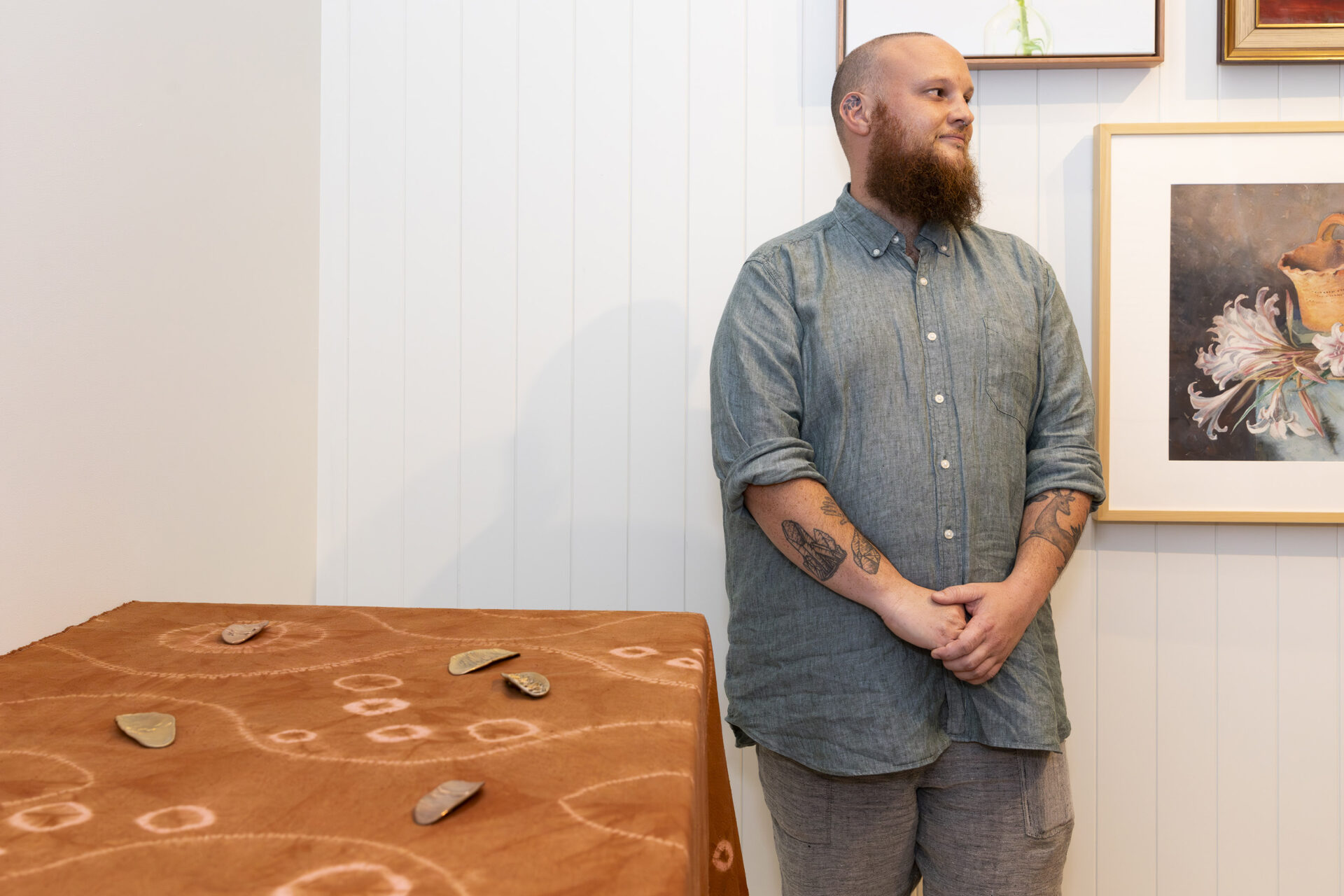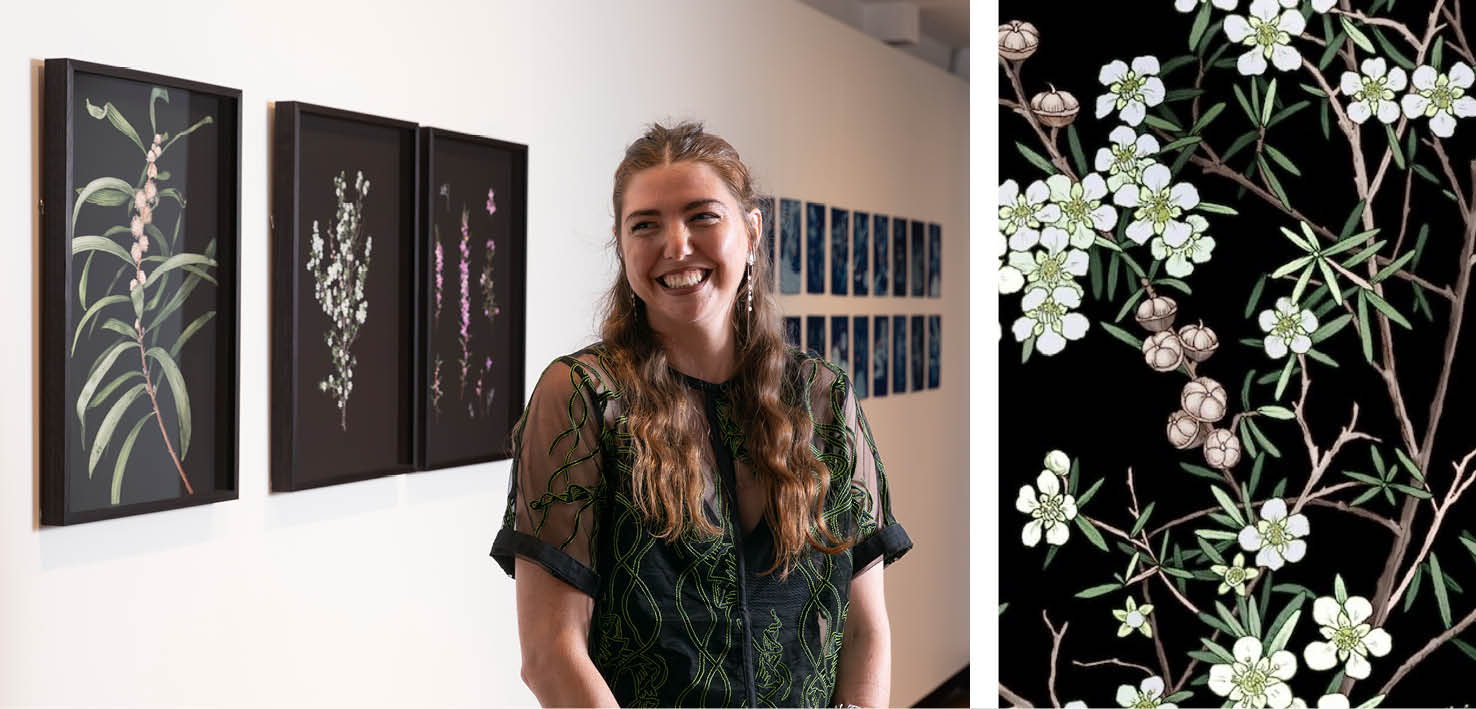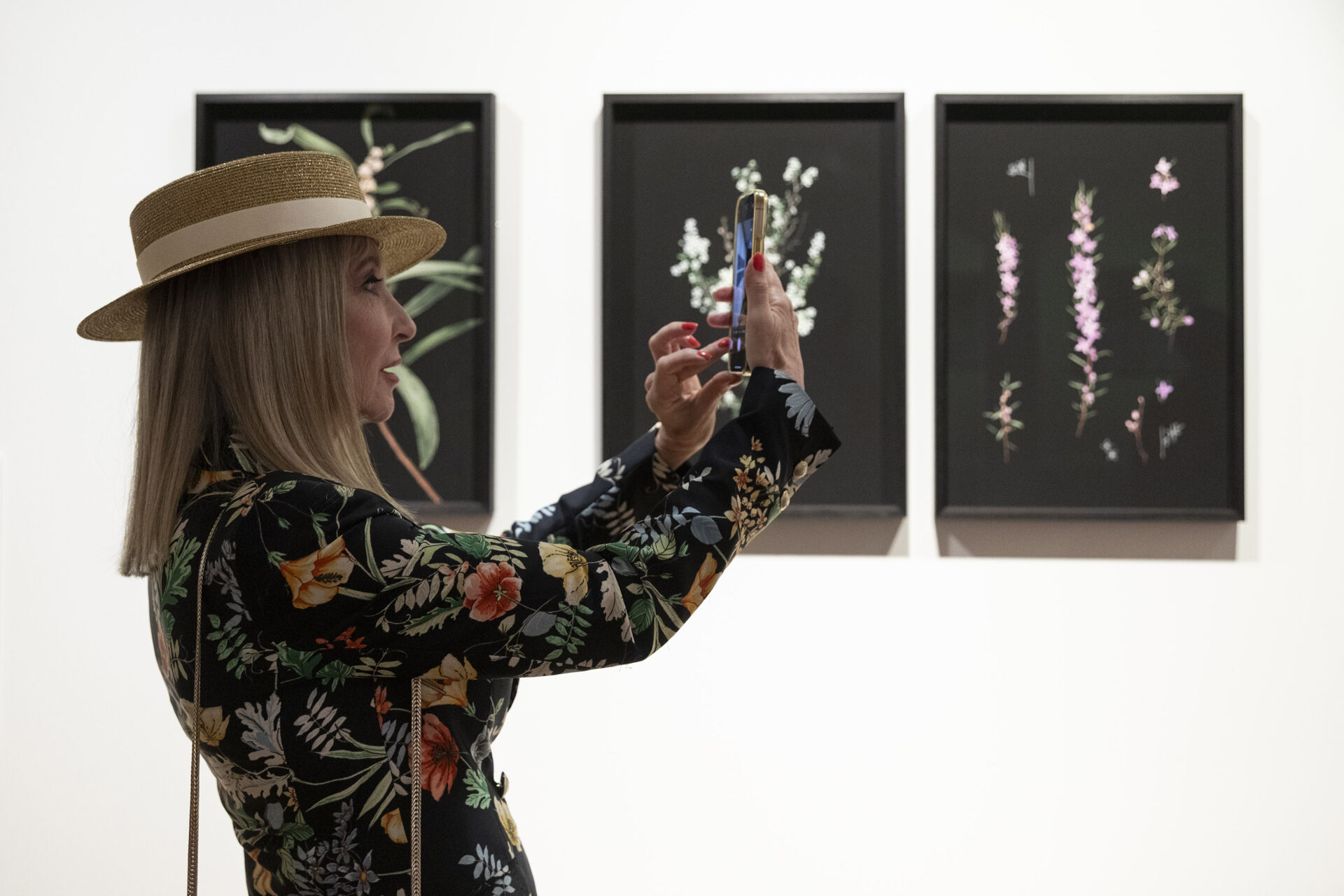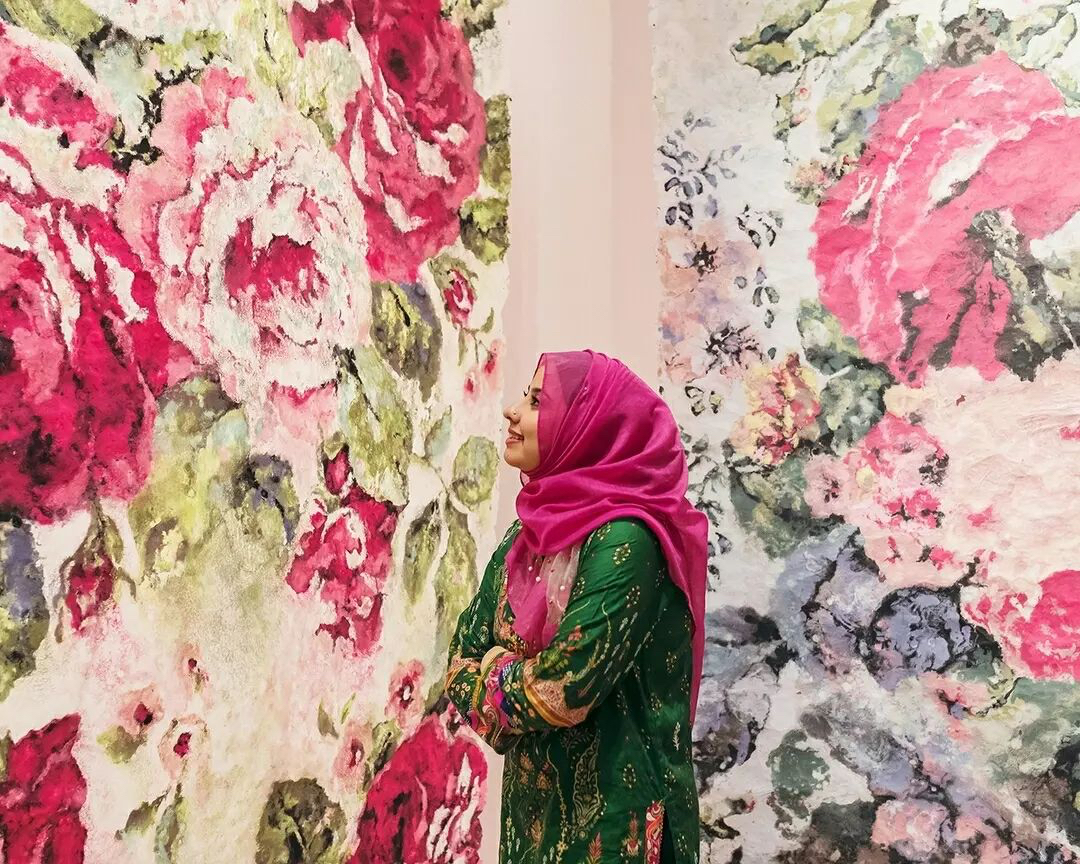
Pick of the Bunch: Brisbane’s “Rearranged” Exhibition
It appears the good folk at the Museum of Brisbane have gone wild for flowers. Case in point: the recent residency of Chantal Fraser that resulted in a blooming, creature-filled botanical installation. And Hiromi Tango, the latest Artist-in-Residence, who’s been working with crafty museum-goers to turn Adelaide Street Pavilion into a lush, bud-filled sanctuary.
Then there’s the museum’s major exhibition, Rearranged: Art of the Flower, which takes a fresh look at the flora of Meanjin/Brisbane. Held in an airy space reminiscent of an old Queenslander, Rearranged has the work of luminaries Margaret Olley, Vida Lahey and William Bustard sitting alongside contemporary talents, such as Monica Rohan and Ashlee Becks.
Notions of comfort and cosiness, the everyday and the unobtainable run throughout, from the quiet still lifes of John Honeywill to the metres-long floral lounge-inspired works of Karen Stone. Michael Zavros and Judith Sinnamon explore the seductive beauty of invasive weeds, while multidisciplinary artist Elisa Jane Carmichael explores the ancestral memories imbued in the wildflowers of Quandamooka Country.
Here, we catch up with two of the featured talents – Norton Fredericks and Edith Rewa – to get their take on art’s most enduring motif and the Rearranged pieces they covet most.
above WORK BY KAREN STONE, PHOTOS BY KATIE BENNETT
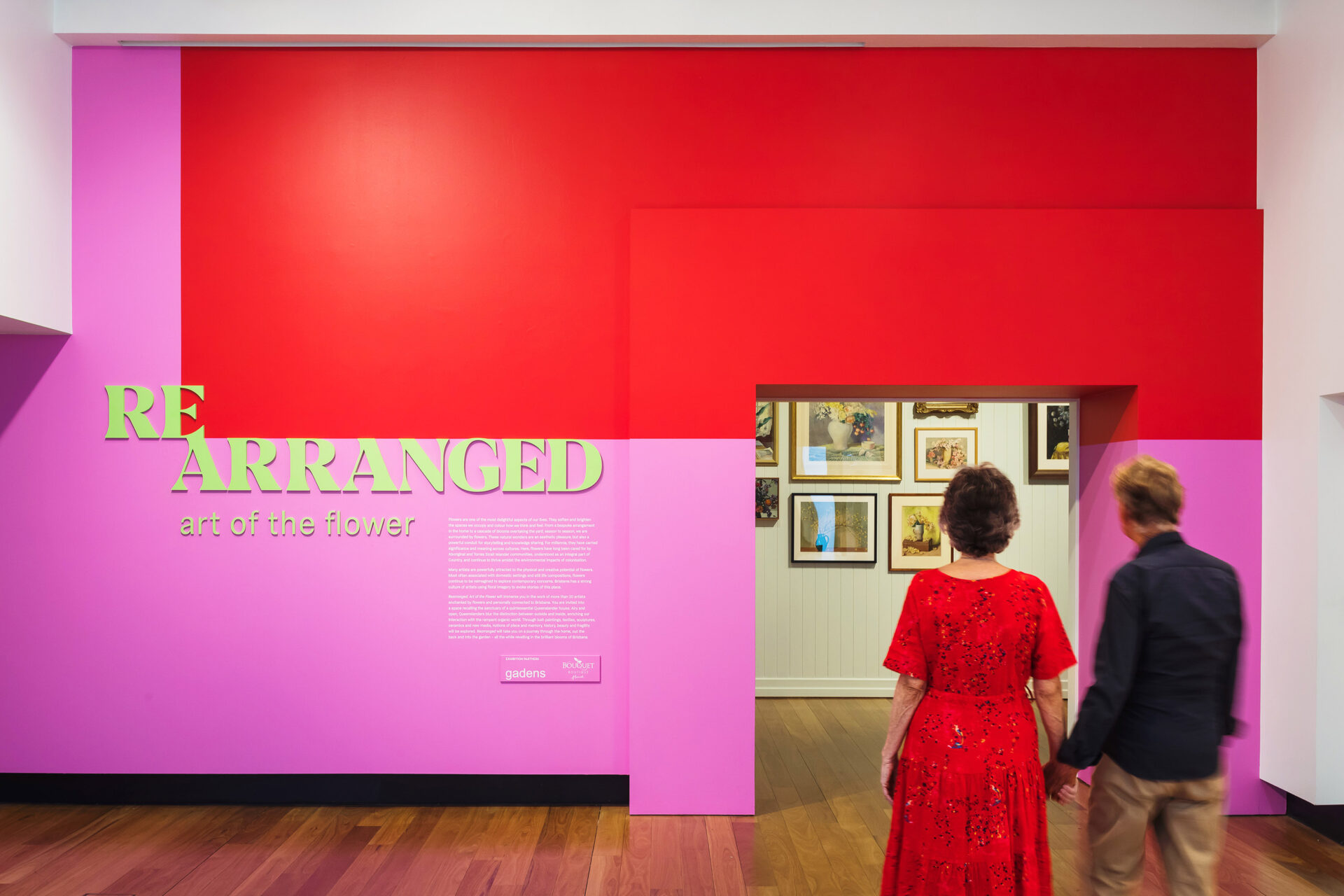
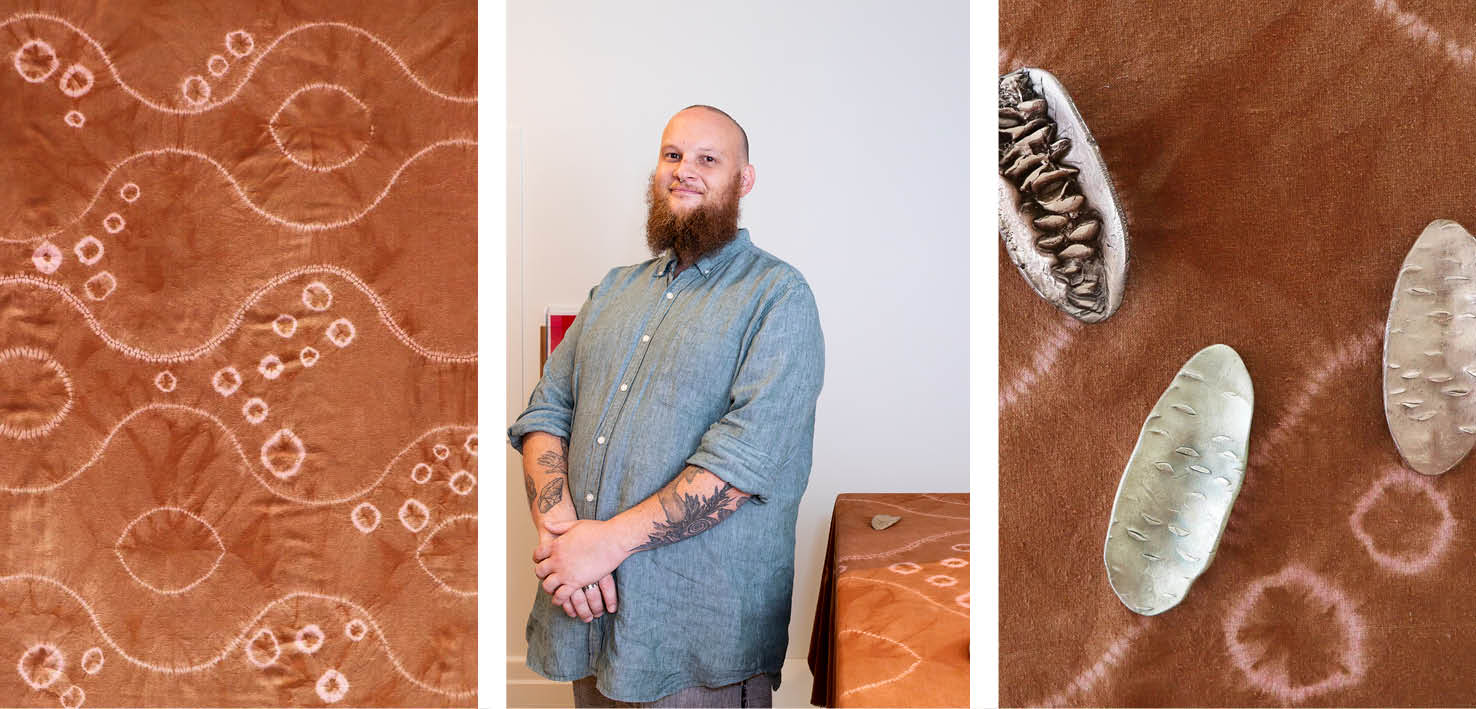
NORTON FREDERICKS / RETRITUS
Tell us about yourself!
I am a queer visual artist with mixed European and Murri ancestry, who lives and works on Kombumerri Country/Gold Coast. I predominantly work with fibre, textiles, botanical dyes and bronze. My work is at the intersection of science and art, exploring the dialogue between environmental sustainability, queer ecologies and First Nations’ knowledges.
Now tell us about the garden of your wildest dreams. What grows there?
It would be full of endemic native plants and grasses. My house backs onto a river, so I’d love to restore the aquatic plants there as well.
Can you walk us through the work you created for Rearranged?
Banksia is created with silk, bronze and botanical dyes, using stitched shibori techniques and cast-bronze banksia seed pods. It considers the afterlife and the life cycle of flowers, focusing on the banksia seed pod as a beautiful, useful tool and as a knowledge-holder, as plants store memory for future generations in their seeds.
Flowers are a great example of perfect design and plant intelligence.
As an artist, what is it that fascinates you about flowers?
What fascinates me most is how each plant has evolved over time to interact with the animals in their area. Flowers are a great example of perfect design and plant intelligence.
If you could take home one work from the exhibition (other than your own), which one would you choose?
I would love to hang Christopher Bassi’s work in my home; I love the nostalgia in his paintings. A Passing Storm reminds me of the pavement at the front of my nan’s house – when I saw it in the exhibition, I could smell the frangipani flowers wilting on the warm concrete.
Read More – Discover Brisbane’s “Inclusive, Genderless, Timeless” Creative Space
EDITH REWA
Tell us about yourself!
I like plants and patterns, and making patterns from plants! I’m a textile designer and illustrator, currently based in Meanjin. I split my time between client commissions – in publishing, conservation, stationery, fashion and design – and with exhibition work and my own scarf/artwork label, Edith Rewa.
Now tell us about the garden of your wildest dreams. What grows there?
Great question! I think it would be some sort of tessellated wonderland of coastal heath from south-east Queensland, New South Wales and Tasmania, with a subalpine section in there, too. A patchwork of native Australian garden bushland! Lots of epacris and tiny orchids, boronia, leptospermum [tea trees], flannels and auburn/copper grasses, with natural sandy spaces to lounge in and enjoy in between. Maybe it would be flanked with scribbly gums, olearias [daisy-bushes] and a few waratahs to keep awe levels up.
Chosen after many intimate moments and walks through the local reserve, these were the three plants that most spoke to me.
Can you walk us through the work you created for Rearranged?
The three plant portraits I created are species from Toohey Forest – bushland that’s surrounded by Brisbane suburbs on Turrbal and Yuggera Country. Chosen after many intimate moments and walks through the local reserve, these were the three plants that most spoke to me. I spent time researching, observing and getting to know each species before illustrating them in the bush and at my Annerley studio.
What are the three species you chose?
The Queensland hakea, Hakea benthamii, that reached above me for the sun; the tantoon, Leptospermum polygalifolium, that brushed my cheeks; and the forest boronia, Boronia rosmarinifolia, that made me stop, crouch down and admire its exquisite purple flowers. I placed the portraits in black-boxed worlds to let the plants’ individual personalities shine.
As an artist, what is it that fascinates you about flowers?
Almost everything! The diversity in colours, shapes, textures and scents, and the feelings of awe and wonder they bring up in me. The way they interact with the creatures and landscapes around them, their beauty, their clever adaptations and the way they make me stop and investigate or admire, capturing me completely.
If you could take home one work from the exhibition (other than your own), which one would you choose?
Sarah Rayner’s Flowerbones of Meanjin had me absolutely captivated. What a treat it would be to gaze at and admire them every day.
Rearranged: Art of the Flower runs until 29 September 2024 at the Museum of Brisbane (Level 3, City Hall, 64 Adelaide Street, Brisbane City); entry is free.

